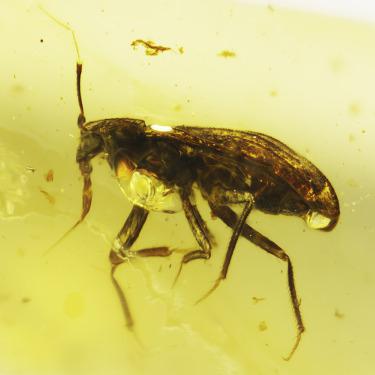iScience ( IF 4.6 ) Pub Date : 2020-06-16 , DOI: 10.1016/j.isci.2020.101280 Erik Tihelka 1 , Michael S Engel 2 , Diying Huang 3 , Chenyang Cai 4

|
Mimicry is ubiquitous in nature, yet understanding its origin and evolution is complicated by the scarcity of exceptional fossils that enable behavioral inferences about extinct animals. Here we report bizarre true bugs (Hemiptera) that closely resemble beetles (Coleoptera) from mid-Cretaceous amber. The unusual fossil bugs are described as Bersta vampirica gen. et sp. nov. and Bersta coleopteromorpha gen. et sp. nov. and are placed into a new family, Berstidae fam. nov. The specialized mouthparts of berstids indicate that they were predaceous on small arthropods. Their striking beetle-like appearance implies that they were either involved in defensive mimicry or mimicked beetles to attack unsuspecting prey. The latter would represent the first case of aggressive mimicry in the invertebrate fossil record. These findings enrich our understanding of the paleoecological associations and extinct behavioral strategies of Mesozoic insects.
中文翻译:

白垩纪臭虫的模仿。
拟态在自然界无处不在,但由于稀有化石的稀缺性使得人们对已灭绝动物的行为进行推断,因此了解其起源和进化变得复杂。在这里,我们报告了与白垩纪中期琥珀的甲虫(鞘翅目)非常相似的奇异真虫(Hemiptera)。不寻常的化石虫被称为Bersta vampirica gen。等。十一月 和Bersta鞘翅目gen。等。十一月 并被安置在一个新家族Berstidae fam中。十一月 berstids的专用口器表明它们早于小型节肢动物。它们像甲壳虫一样醒目的外表意味着他们要么参与防御模仿,要么模仿甲虫攻击毫无戒心的猎物。后者将代表无脊椎动物化石记录中的第一个侵略性模仿案例。这些发现丰富了我们对中生代昆虫的古生态联系和灭绝行为策略的理解。











































 京公网安备 11010802027423号
京公网安备 11010802027423号